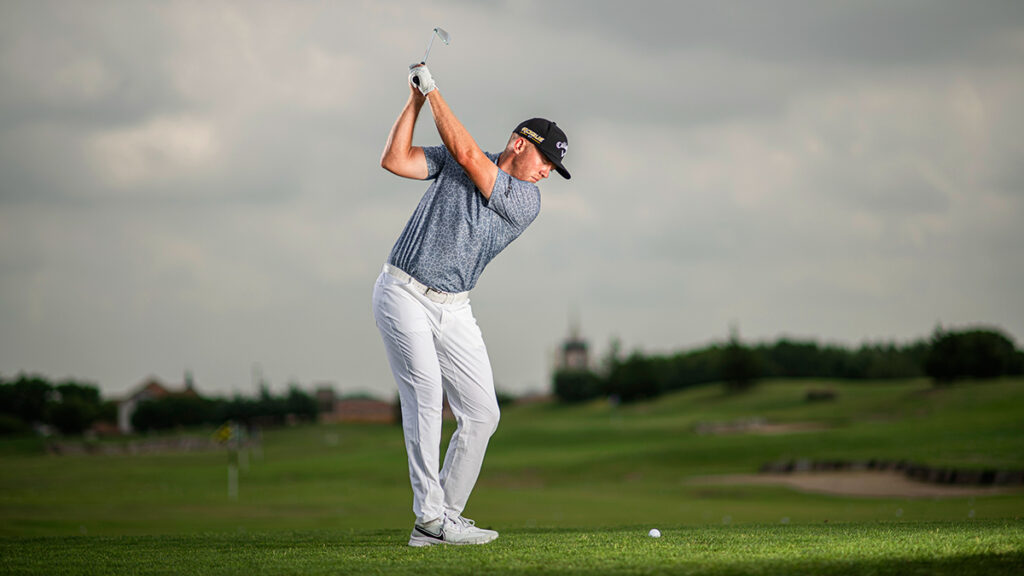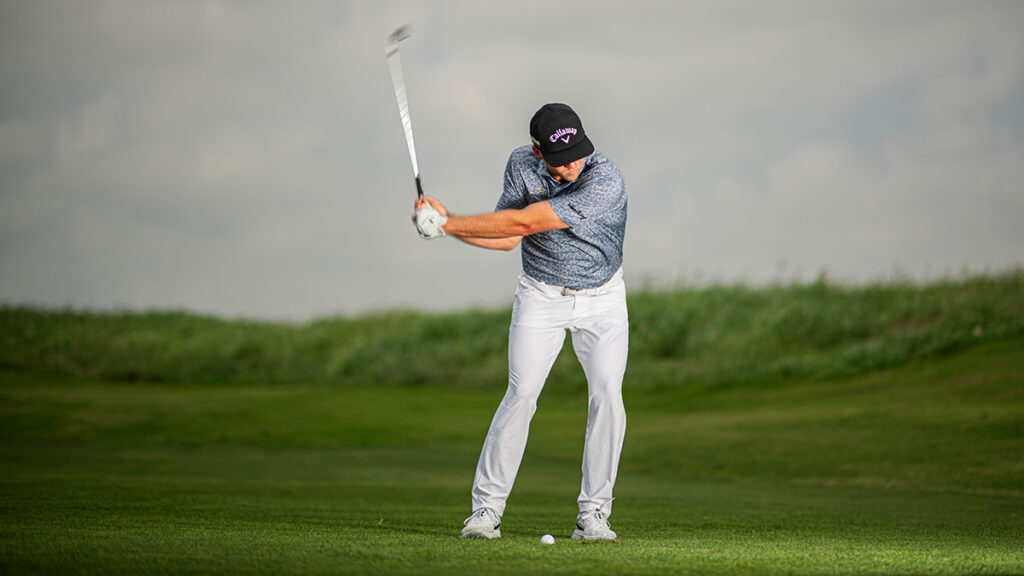Make these easy adjustments to hit your irons low and high
Photographs by Dom Furore
I grew up just outside Oklahoma City, and like most professional golfers from that part of the USA, I became an above-average iron player. I had to. It was a matter of survival. On many days, the wind blew 30 miles per hour and would gust to 40. If I couldn’t hit the ball consistently in the centre of the clubface, I was doomed. When you play in a lot of wind, not only do you have to make crisp contact, but you have to control the spin and trajectory, too. That’s how you become a great iron player.
For me, dialling up a low or high ball flight is second nature. I’ve played so much golf in the wind that once I’ve determined the type of trajectory I want, my setup, swing and feel for that shot adjust automatically to create the desired ball flight. I don’t give any thought to technique, which is a great way to play.
That said, I’m guessing it doesn’t come as naturally for you, and you could use a little help on windy days. So let me and my swing coach, Boyd Summerhays, give you some simple tips to help you control the ball in the breeziest of conditions. If you can command the trajectory of your iron shots, then you can manage any wind. Learn these simple setup and swing adjustments and watch your iron game soar.
TALOR GOOCH is a three-time LIV Golf winner, including making history with his back-to-back wins in Adelaide and Singapore in April. He also has one PGA Tour title.

Hit it low
To hit a low, piercing shot that can penetrate almost any wind, you need to adjust your swing speed and the club’s loft. You subtract speed by abbreviating the length of your backswing [above left] and follow through [above right]. This is done automatically by narrowing your stance, which restricts your ability to turn your hips and shoulders on the backswing and generate maximum speed. I move my trail foot closer to the target, which effectively moves the ball farther back in my stance, slightly behind my sternum. With my upper body more on top of the ball, it’s much easier to return the handle ahead of the ball at impact, reducing the loft on the clubface. Don’t get me wrong, I still try to smash it, but by bringing my feet closer together, I can be aggressive without having to worry about imparting too much spin. That’s a good lesson for you: don’t take speed off by slowing down your body rotation. Make sure that your follow through is at least as long as your backswing, and let your setup dictate your speed.


Point the face down
Most amateurs need help hitting the ball lower because of an open clubface at impact. It’s hard to flight the ball low if you’re consistently delivering the face open, which creates more loft and spin. To fix this, pay attention to the face on the takeaway. Swing the shaft back to parallel and check that the grooves are pointing down towards the ground [top photo, left], not the sky. If they are, the back of your lead wrist will be flat, not cupped, mirroring that of the face both here and all the way to the top of your backswing [left]. From this square position, you’ll find it much easier to hit the ball solid and bring the flight down.

Hit it high
Sometimes it pays to flight your irons high, such as when the wind is behind you or you have a front or tucked pin location. In those instances, you need more speed and loft. Again, a simple adjustment to your setup will help you achieve both. This time, I widen my stance by moving my trail foot farther from the target, which results in the ball being forward relative to my sternum. From this wider, stable base, I’m able to make a fuller backswing [above left] and follow through [above right], generating more clubhead speed and spin for a higher, softer-landing shot. With the more forward ball position, I feel as if my upper body is farther behind the ball so that I hit less down on it, creating a higher launch angle. I’m still compressing the ball, but my hands are not as far ahead of the ball at impact as they are for the lower shot. Be an artist out there. Visualise the trajectory of the shot you want to play and where you see the ball landing, and then let your body paint that picture.

Keep pace with lower half
The most common mistake I see among amateurs is that they struggle to transfer their weight forward on the downswing. Their lower body moves towards the target, but their upper body stays back. As a result, the club bottoms out behind the ball and you can’t compress it. When you toss a ball, you automatically step forward and transfer your weight. That’s what has to happen on the downswing. Another way to think about it is to feel your upper body moving in conjunction with your lower body. That can’t happen without proper weight shift. Have the upper body tag along on the downswing, and you’ll flush it every time.



